�
Digital Filters and Signal Processing
Digital Filters and Signal Processing
THIRD EDITION
with MA TLAB® Exercises
Leland B. Jackson
University of Rhode Island
.... " SPRINGER SCIENCE+BUSINESS MEDIA, LLC
�
Copyright 1996 © by Springer Science+Business Media New York
Originally published by Kluwer Academic Publishers in 1996
Softcover reprint ofthe hardcover 3rd edition 1996
Fifth Printing 2002
All rights reserved. No pan of this publication may be reproduced, stored in a retrieval
system, or transmitted in any form or by any means, mechanical, photocopying,
recording, or otherwise, without written permission of the publisher, Springer Science+
Business Media, LLC.
Sections 6.1-6.3 ofthis text are taken largely from sections 7.1-7.3 of Signals, Systems
and Trans/orms (pp. 372-400), Leland B. Jackson, © 1991 by Addison-Wesley Publishing
Company, Inc. Reprinted by permission of the publisher.
MATLAB is a registered trademark of the MathWorks, Inc.
ISBN 978-1-4419-5153-3
DOI 10.1007/978-1-4757-2458-5
ISBN 978-1-4757-2458-5 (eBook)
Consulting Editor: Jonathan Allen, Massachusetts Institute of Technology
Library of Congress Cataloging-in-Publication Data
Jackson, Leland B.
Digital filters and signal processing: with MATLAB exercises I
Leland B. Jackson. -
3rd ed.
cm.
p.
Includes bibliographical references and index.
1. Electrical filters, Digital. 2. Signal processing-Digital
techniques.
TK7872.F5J33
621.382'2-dc20
95-3230
I. Tide.
1995
CIP
�
To my wife Diana
and our daughter Anita
�
Contents
Prefaee xi
1 / Introduetion: Tenninology and Motivation
2 / Diserete-Time Signals and Systems
2.0 Introduetion
2.1 Diserete-Time Signals, or Sequenees
2.2 Diserete-Time Systems and Filters
2.3 Stability and Causality
Problems
3 / The z Transfonn
3.0 Introduetion
3.1 Definition of the z Transfonn
3.2 Inverse z Transfonn
3.3 Inverse z Transfonn for Causal Sequenees
3.4 Properties of the z Transfonn
Problems
4 / Input/Output Relationships
4.0 Introduetion
4.1 System Funetion and Frequeney Response
4.2 Differenee Equations
4.3 Geometrie Evaluations of H(z) and H'(w)
4.4 State Variables
Problems
1
5
5
5
8
21
24
29
29
29
39
41
47
51
55
55
55
59
63
73
86
�
viii Contents
5 / Discrete-Time Networks
5.0 Introduction
5.1 Flow Graph Properties
5.2 Network Structures
5.3 Properties of Network Coefficients
5.4 Special Discrete-Time Networks
Problems
6/ Sampling and Fourier Analysis
6.0 Introduction
6.1 Discrete-Time Fourier Transform
6.2 Properties of the DTFT
6.3 Sampling
6.4 Quadrature Mirror Filters
Problems
7 / Discrete Fourier Transform
7.0 Introduction
7.1 Derivation and Properties of the DFT
7.2 Zero Padding
7.3 Windows in Spectrum Analysis
7.4 FFT Algorithms
7.5 Prime-Factor FFT's
7.6 Periodogram
Problems
8 / IIR Filter Design by Transformation
8.0 Introduction
8.1 Classical Filter Designs
8.2 Impulse-Invariant Transformation
8.3 Bilinear Transformation
8.4 Spectral Transformation
Problems
9/ FIR Filter Design Techniques
9.0 Introduction
9.1 Window-Function Technique
9.2 Frequency-Sampling Technique
9.3 Equiripple Designs
9.4 Maximally-Flat Design
Problems
95
95
95
100
110
121
129
139
139
140
145
152
174
180
189
189
189
196
203
213
227
237
244
249
249
250
260
264
277
284
289
289
290
301
307
314
318
�
10 / Filter Design by Modeling
10.0 Introduction
10.1 Autoregressive (all-pole) Filters
10.2 Moving-Average (all-zero) Filters
10.3 ARMA (pole/zero) Filters
10.4 Lattice Structures
10.5 Spectrum Analysis by Modeling
Problems
11 / Quantization Effects
11.0 Introduction
11.1 Coefficient Quantization
11.2 Signal Quantization
11.3 Dynamic Range and Scaling
11.4 Parallel and Cascade Forms
11.5 Limit-Cyde Oscillations
11.6 State-Space Structures
11. 7 Error Feedback
Problems
12 / Digital Filter Implementation
12.0 Introduction
12.1 Bit-Serial Arithmetic and VLSI
12.2 Distributed Arithmetic
12.3 Block IIR Implementations
Problems
13 / Filter and Systems Examples
13.0 Introduction
13.1 Interpolation and Decimation
13.2 Hilben Transformation
13.3 Digital Oscillators and Synthesizers
13.4 Speech Synthesis
13.5 Cepstrum
Problems
Answers to Selected Problems
References
Index
ix
323
323
326
341
345
356
362
369
373
373
374
382
387
392
405
409
418
422
427
427
427
437
440
448
451
451
451
462
465
469
473
483
487
491
499
�
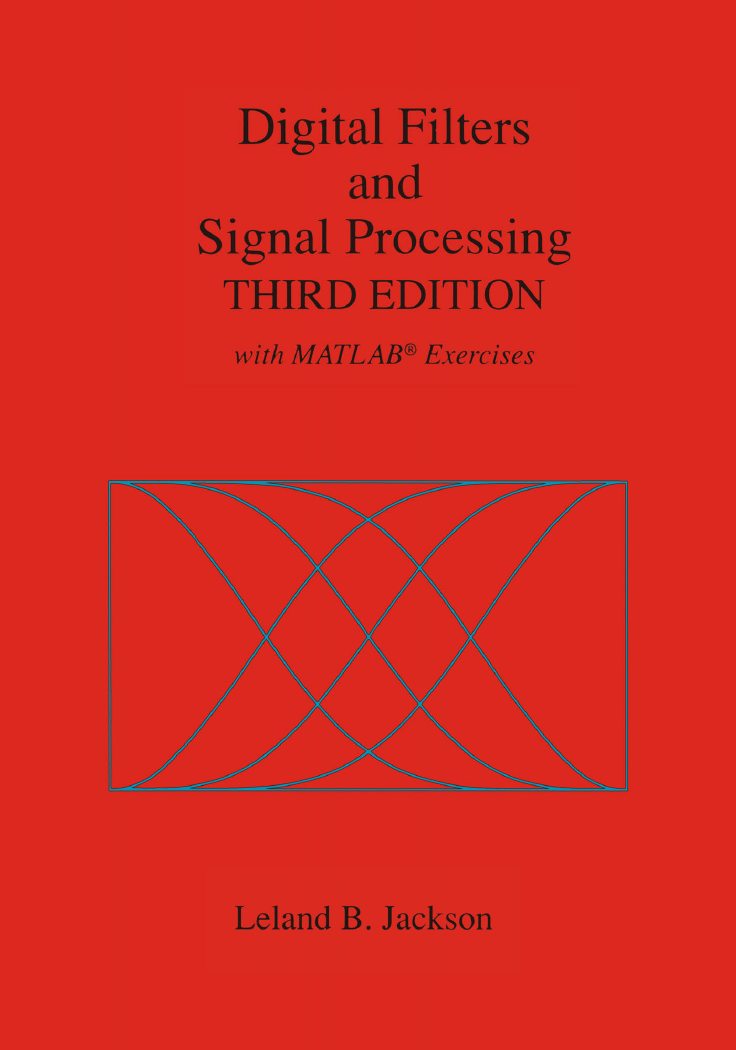
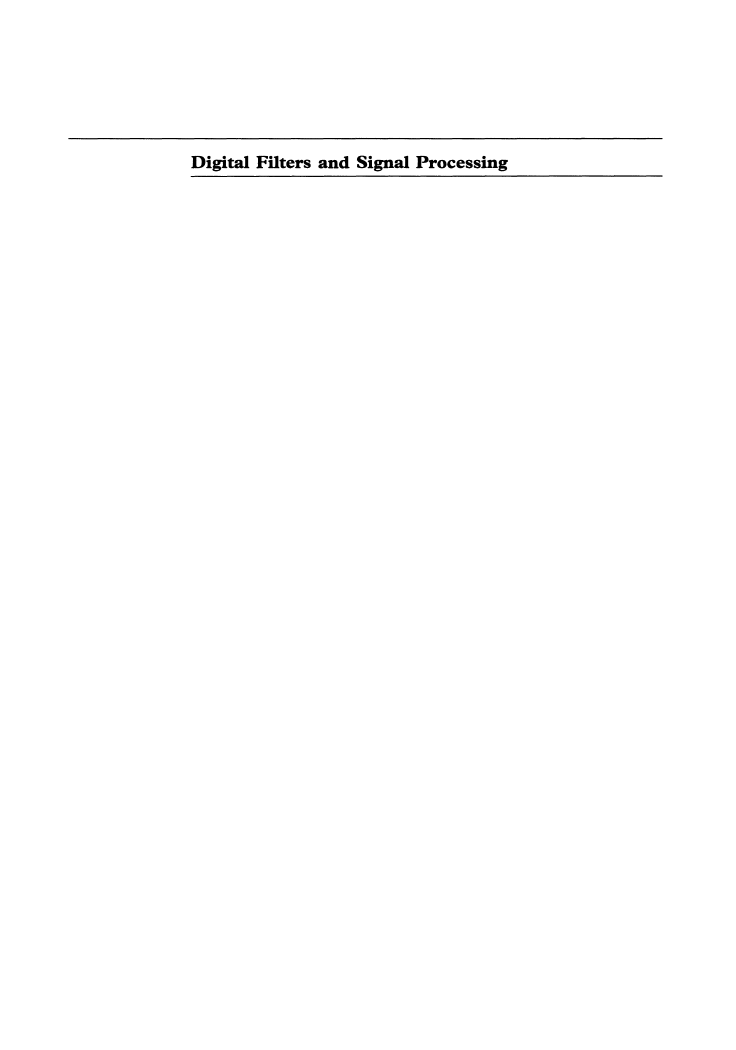
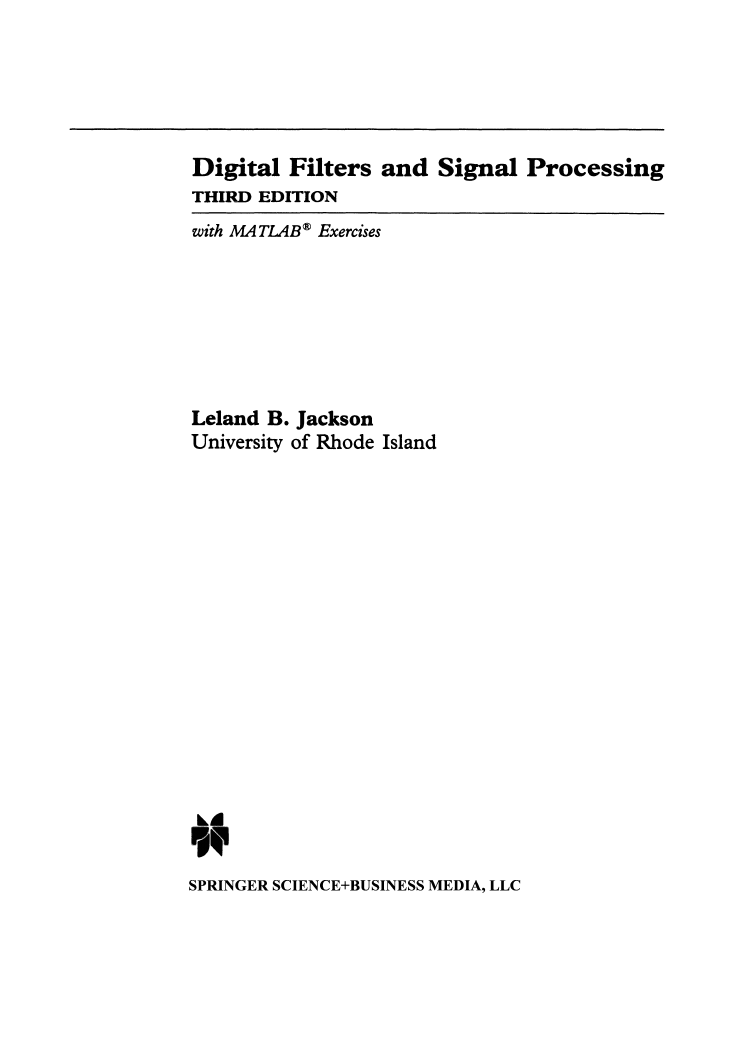
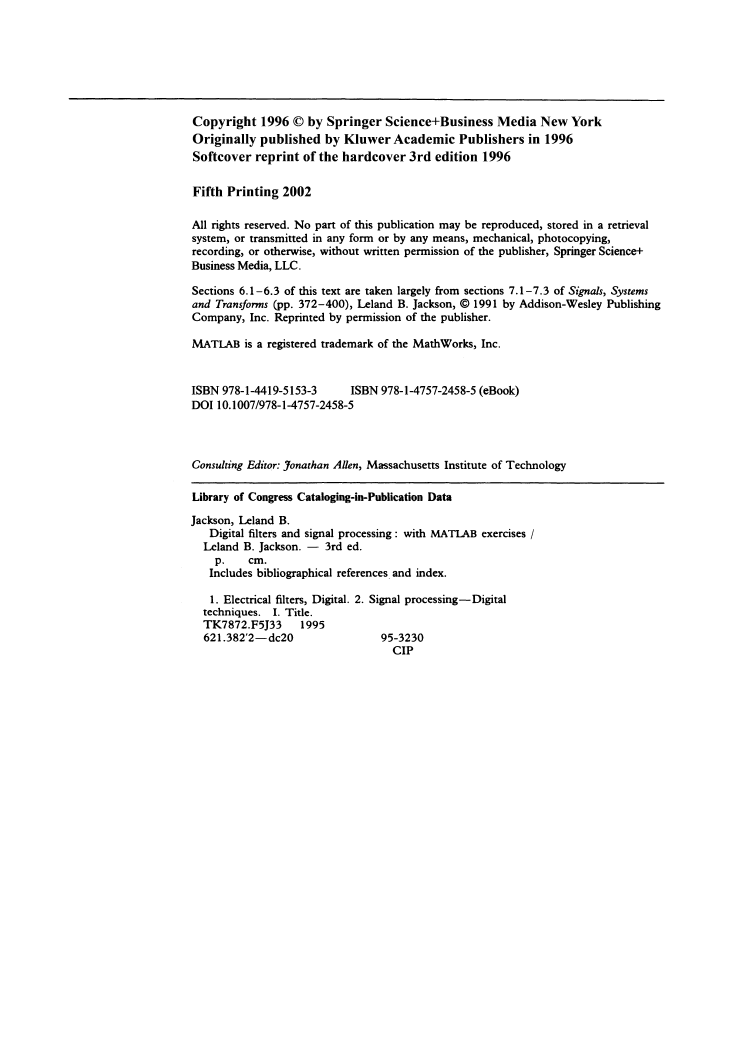
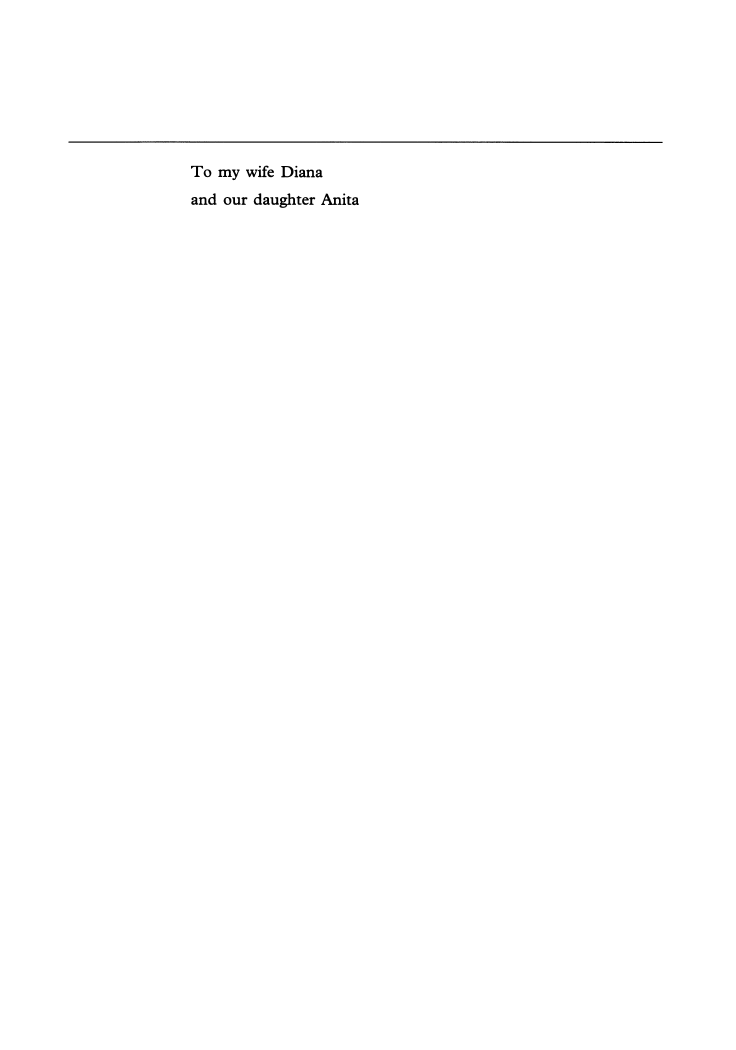


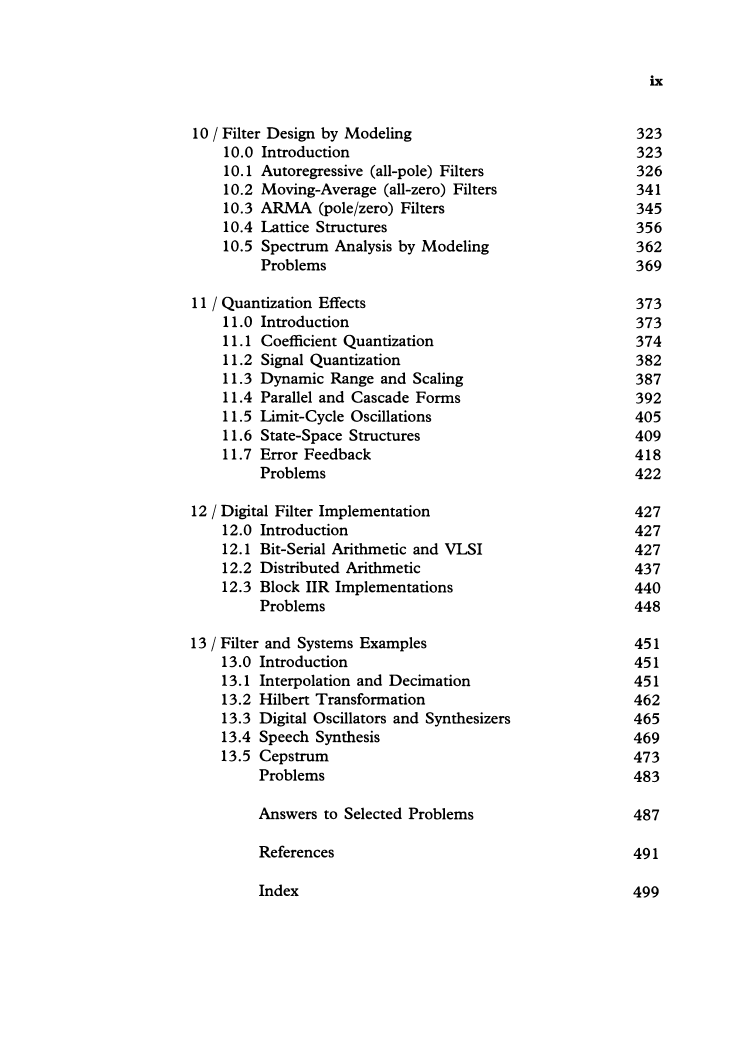








 2023年江西萍乡中考道德与法治真题及答案.doc
2023年江西萍乡中考道德与法治真题及答案.doc 2012年重庆南川中考生物真题及答案.doc
2012年重庆南川中考生物真题及答案.doc 2013年江西师范大学地理学综合及文艺理论基础考研真题.doc
2013年江西师范大学地理学综合及文艺理论基础考研真题.doc 2020年四川甘孜小升初语文真题及答案I卷.doc
2020年四川甘孜小升初语文真题及答案I卷.doc 2020年注册岩土工程师专业基础考试真题及答案.doc
2020年注册岩土工程师专业基础考试真题及答案.doc 2023-2024学年福建省厦门市九年级上学期数学月考试题及答案.doc
2023-2024学年福建省厦门市九年级上学期数学月考试题及答案.doc 2021-2022学年辽宁省沈阳市大东区九年级上学期语文期末试题及答案.doc
2021-2022学年辽宁省沈阳市大东区九年级上学期语文期末试题及答案.doc 2022-2023学年北京东城区初三第一学期物理期末试卷及答案.doc
2022-2023学年北京东城区初三第一学期物理期末试卷及答案.doc 2018上半年江西教师资格初中地理学科知识与教学能力真题及答案.doc
2018上半年江西教师资格初中地理学科知识与教学能力真题及答案.doc 2012年河北国家公务员申论考试真题及答案-省级.doc
2012年河北国家公务员申论考试真题及答案-省级.doc 2020-2021学年江苏省扬州市江都区邵樊片九年级上学期数学第一次质量检测试题及答案.doc
2020-2021学年江苏省扬州市江都区邵樊片九年级上学期数学第一次质量检测试题及答案.doc 2022下半年黑龙江教师资格证中学综合素质真题及答案.doc
2022下半年黑龙江教师资格证中学综合素质真题及答案.doc